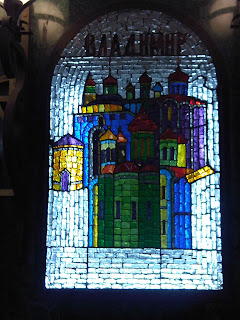A few days passed before I am ready to post again this time about Milano trip, which definitely gave me a number of things to write about. This time my journey took me not only through the beauties of this wonderful city, but through several pavilions of the iSaloni. While there was a great quantity of acknowledged companies, factories, designers and suppliers, my attention was grabbed by Salone Satelite and those it exhibited.
 |
| Melt Down Lamps, Lindstén Form Studio Original Image Here |
I got really excited by the experiments done and the number of techniques applied by young designers in their work and definitely the glass blowing was among those. Not everyone could work out their quality with wood, steel and other materials, while glass works were on the top, providing not only high quality work, but theoretical investigations.
 |
| Melt Down Lamps, Lindstén Form Studio Original Image Here |
These pendants by Lindstén Form Studio represent such a wonderful series of colours in translucent glass, evoking a feelings of having a variety of jellylike delights on the tongue. Though the designer was concerned with 'meltdown' while working on the series, I still find its visual performance as something touching senses, almost evoking sensation of color-associated flavorings.
Moreover, I think that their shape suggests as if it was made of one of those gelatin substances, soft and mellow. It's incredible how rigid and fragile material depending on the shape it creates resembles something absolutely opposite than it is.
Moreover, I think that their shape suggests as if it was made of one of those gelatin substances, soft and mellow. It's incredible how rigid and fragile material depending on the shape it creates resembles something absolutely opposite than it is.




